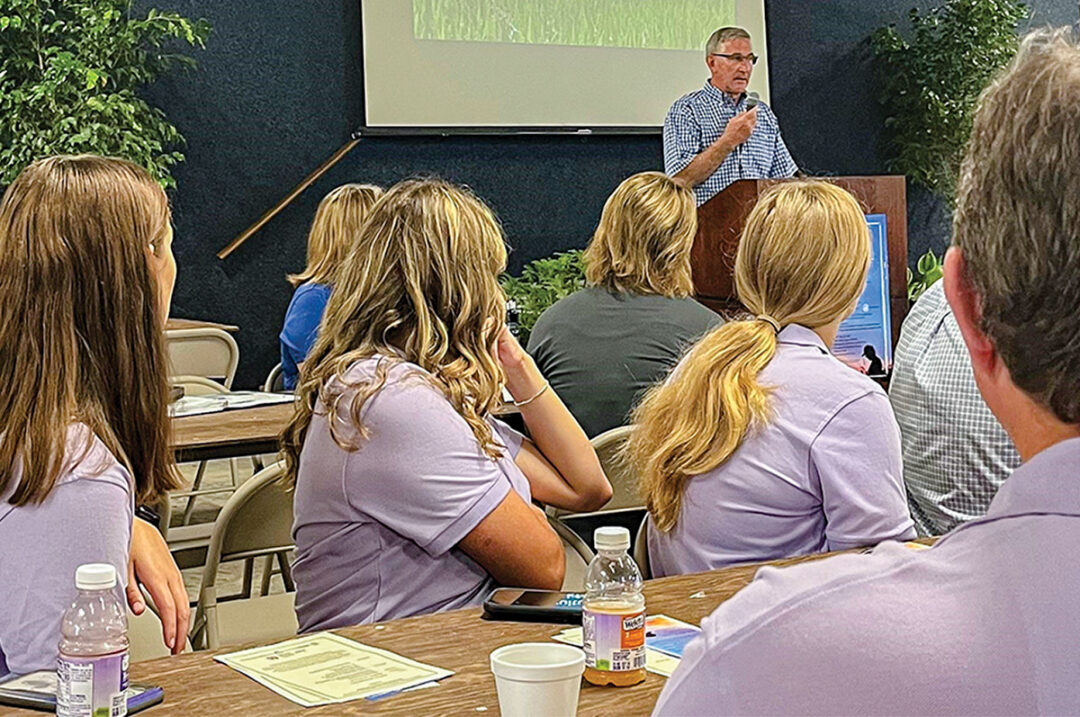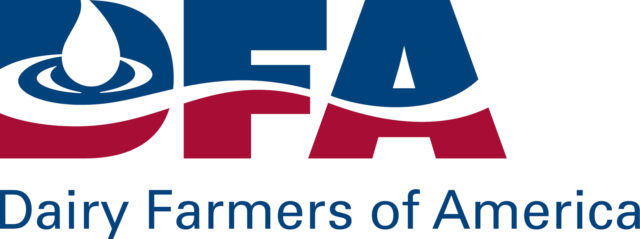Those involved in dairy farming are a close-knit community, where you can count on your neighbors, family members and friends to offer physical support when you need it. When a catastrophe happens on the farm, such as a fire or accident, we can all recount stories about farm communities that have rallied together to help families recover. When it comes to challenges of the mind, including farm stress and mental health struggles, having those conversations within your community can feel more difficult.
The 2022 Pennsylvania Animal Agriculture Mental Wellness Survey was developed to generate a baseline snapshot of the state of mental wellness in Pennsylvania agriculture. One of the key objectives was identifying potential needs relative to mental health for livestock producers.
“The stress is real. We know and recognize that farming is stressful. There are a lot of things out of your control, and mental health can be a challenge. I think we’re gaining more appreciation of it because of public domain, but we need to get a snapshot and then figure out how we can start to address some of those issues and concerns,” said Gina Pighetti, a retired animal science professor from the University of Tennessee who served on the survey team.
To address some of the common barriers to mental health in the agriculture community, Pighetti joined Ginger Fenton, Ph.D., a dairy extension educator at Penn State Extension, at the 2022 Pennsylvania Animal Agriculture Industry Breakfast in August to share findings from the study.
Demographics and response rate
The Mental Wellness Survey was distributed to both dairy and livestock producers and agriculture industry professionals from December 2021 through January 2022. The survey had the following response rate and demographics:
-
Response rate: Based on the number of surveys distributed through several mailing lists, a total of 7.5% of Pennsylvania animal agriculture producers who received the survey responded, and 31% of agriculture industry professionals (veterinarians, financial consultants, sales and technical support representatives, and more) on the mailing lists responded.
-
Demographics: The farmers who responded to the survey most frequently responded on their own behalf, with 94% indicating “self” as the respondent. When indicating gender, 70% of farmers were male and 27% indicated female. The gender distribution of ag industry professionals was more evenly split with 50% male and 48% female, while 2% of the respondents to both surveys preferred not to answer. The highest respondent age category for producers was 61 and up; 38% of industry respondents were 56 or above.
-
Business structure: 62% of respondents were a sole proprietorship, 16% were part of a partnership and 15% were an LLC or corporation. 45% indicated non-partner family members were involved in the farm.
-
Type of livestock: Dairy cattle was the most frequent answer at 56%, followed by beef cattle at 48%. Producers could indicate if they raised more than one species, such as dairy and beef. Over 70% of those who responded had 200 or fewer animals. Fewer respondents indicated they had swine and poultry. Of the industry representatives who responded, 70% worked primarily with dairy.
Behaviors and feelings of farm stress
While the survey is only a snapshot of one part of the Pennsylvania agriculture community, 90% of industry professionals and 89% of farmers felt that mental health was moderately or very important. Additionally, 72% of ag industry professionals surveyed felt that mental health is a serious issue in the farming community.
“Since most survey respondents felt mental health was important, I think that emphasizes there are those people out there who feel it’s important,” Fenton said. “We need to continue trying to make those connections with [those who didn’t take the survey] and have those advocates out there in the agriculture community who can talk to others about this.”
Farmers who completed the survey were asked to indicate if they, their spouse, a family member and farm employees had experienced specific feelings and behaviors associated with farm stress in the past year. For all groups, feeling tired/having less energy was reported with the greatest frequency. Feeling nervous and anxious was second for all groups. Low energy was another common response for all groups. Interestingly, only 18.8% and 16.7% of farmers and industry professionals, respectively, reported no symptoms of stress.
Which specific stressors led to these feelings of tiredness and anxiety? Financial stress was the top choice of farmers and ag industry professionals. The other top stressors for farmers were weather and other uncontrollable forces along with long hours and stressful working conditions. Farmers were also asked to choose the extent to which specific factors impacted their mental health. The top factors impacting their mental health were financial stress, fear of losing the farm and family dynamics.
“The fear of losing the farm ran across all generations and demographics who answered. Financial factors and embarrassment were the other two. I think we need to look at those areas first. If we can prevent the cause, maybe we can alleviate those feelings and stressors down the road,” Pighetti added.
With these behaviors and feelings of stress clearly present in the agriculture community, recognizing those signs and knowing how to respond was another aspect of the survey. Both farmers and ag industry professionals were asked about their level of confidence in spotting the warning signs of a mental health condition in someone in the agriculture community. Farmers more frequently expressed a higher level of confidence in identifying warning signs compared to the responses from ag industry professionals.
“The responses were very telling. Even those individuals who might not be involved in the day-to-day agriculture operations, such as spouses or clergy members, still need to be cognizant of the issues related to the health and well-being of our farmers,” Fenton said. “It just emphasizes that it’s a community effort. Industry professionals felt less confident in recognizing and responding to mental health conditions, and they are our front-line people. It’s all the more reason to make sure they are in the conversation.”
Obstacles to seeking help
Who have Pennsylvania dairy farmers been talking to about their mental health struggles? Seventy-two percent of survey respondents said their spouse, 57% said family members, 54% said friends, and 29% said agribusiness employees. Ag business professionals were the most frequently indicated professionals of any type, while mental health professionals – such as private counselors, community mental health and telehealth professionals – were infrequently indicated. This shows how important it is for agribusiness professionals to be equipped to not only recognize signs of farm stress, but know how to respond appropriately.
“Recognizing farm stress is just the start. We can usually see when someone is stressed or having a challenge, but how do you respond to that and help them take those next steps? That’s a really big question,” Pighetti said. “Sometimes when you’re struggling, it’s hard to even listen to who’s there. It’s tough. That’s probably the big challenge we face.”
Another challenge is the obstacles in place for livestock producers seeking help or treatment for a mental health condition. The farmers and ag industry professionals surveyed indicated that cost, embarrassment and availability were the most frequent obstacles for seeking help.
Based on the survey findings, there were three key groups that identified more obstacles than others and are at a higher risk:
-
Females – The 26% of female respondents identified struggles with constant worry and difficulty concentrating. Cost, availability and accessibility were the biggest obstacles for women, not so much embarrassment and family dynamics.
-
Younger generations – The younger generation respondents also seemed to have more obstacles in place. Accessibility, family and embarrassment were their leading drivers, while availability and cost weren’t as much of an issue.
- Larger farms – In general, the largest farms that responded tended to show more challenges with being anxious, worried, having anger outbursts and feelings of hopelessness.
Working together to break down barriers
With the discovery of several factors impacting farm stress and barriers to seeking help, Fenton and Pighetti encouraged producers and agriculture professionals to use these findings to reduce the stigma surrounding mental health, have open conversations in their communities and utilize the resources available to them.
“We have to continue the conversation to make this an acceptable topic to talk about. We need to prepare those groups – our ag business professionals, family members and rural community members – to have those conversations. Hopefully, the more we do that, it will continue to be normalized and the stigma and embarrassment will start to fade,” Fenton said. “Employers should also promote access to these services, such as telehealth, and have conversations with employees to increase awareness of what resources are available.”
To view the full report and findings, visit Center for Dairy Excellence - 2022 Mental wellness survey results.
The survey was part of an initiative of the Pennsylvania Beef Working Group, Center for Beef Excellence, Center for Poultry & Livestock Excellence, Penn State Extension, and Center for Dairy Excellence. It is funded by the Pennsylvania Department of Agriculture and the USDA Farmer Rancher Stress Network Assistance Program.







